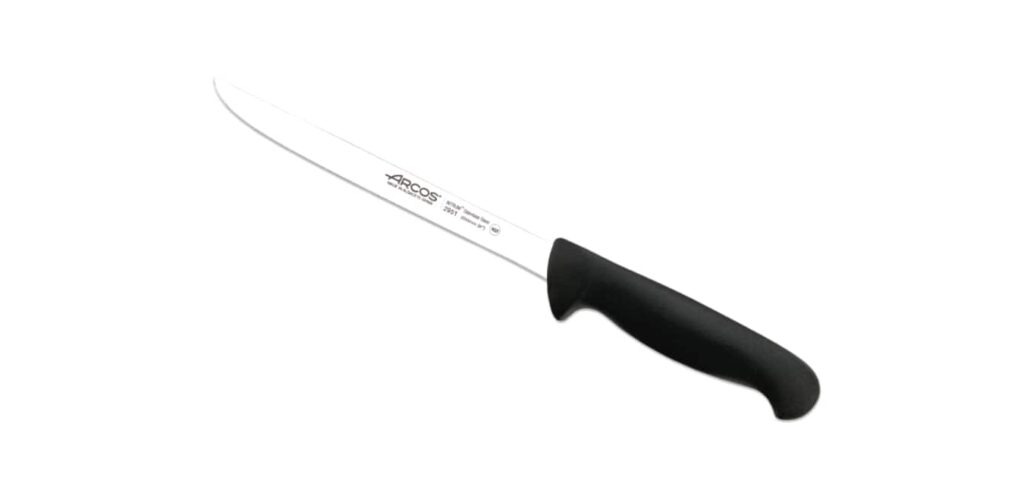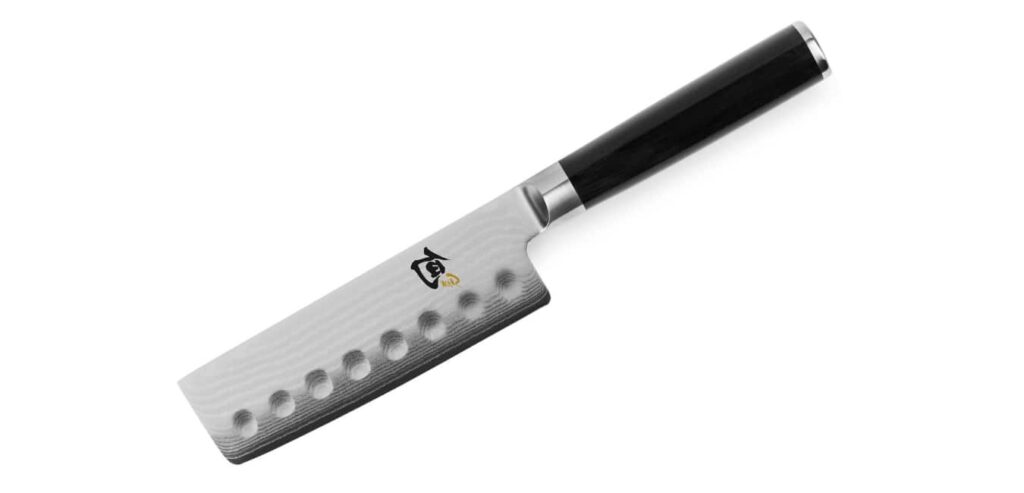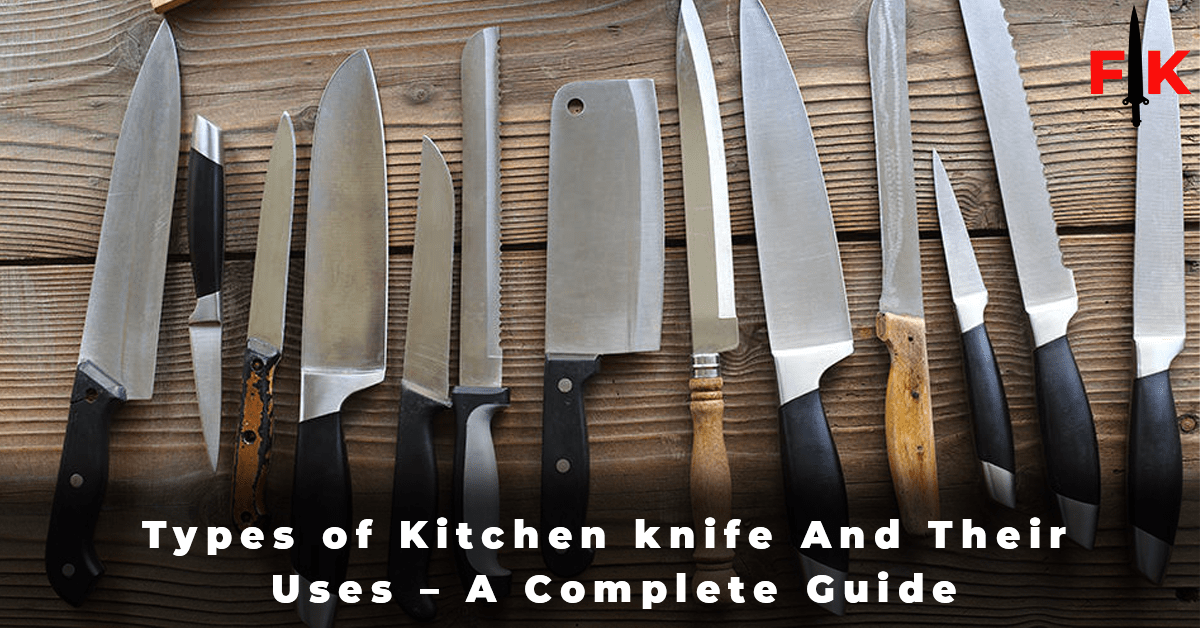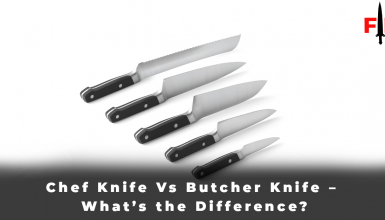Knives are an essential part of cutlery for chefs. No matter the skill level, if a chef is equipped with the wrong knife, it can destroy the outcome of the food. Furthermore, a chef can have many different knives, and each has its individual use. Knives are, therefore, helpful and versatile. I doubt any kitchen may operate properly while not them.
Chefs use two or three types of knives. With them, they feel comfortable while performing their tasks. The first is the Chef’s knife, the second is the paring knife, and the last is the serrated knife. Paring is a small knife that performs different tasks like trimming the peeling of other fruits and vegetables. The utility knife is perfect for chopping food and vegetables at a trim level. It has some qualities like the Chef’s knife.
However, knives are available in several shapes and sizes. Therefore, before you go and equip your kitchen with cutters, you must understand what to travel 1st. Indeed, a great blade won’t automatically make you a great chef, but it’s good to set yourself up for success and use the tools to make things easier and more enjoyable for you as a cook.
Table of Contents
What is the smallest knife used in the kitchen?
The smallest knife that someone can use in the kitchen is the paring knife; it is used to cut, chop and slice fruits and vegetables and many other kitchens. The paring knife has a small blade, three to four inches long, and has an edge like a plainer model of a chef knife. Its sharp, straight blade is suitable for complex tasks like peeling fruits and vegetables.
Types of kitchen knives and their uses.
You may like them and use them on occasion, but the truth is 90% of all cooking jobs, and for 90% of all cooks, these four workhorse knives will serve you beautifully every time because they are an integral part of any kitchen.
- Chef’s knife
- Utility knife
- Paring knife
- Bread knife
1. Chef’s Knife

The Chef’s knife is more flexible than all the knives in the kitchen, and it is an essential device for any cook, professional or amateur. It is used for cutting and chopping. In addition, it can customize numerous duties of the kitchen: dicing, reducing overwhelming garlic.
However, applying it as a deboner or butcher’s work is not suggested. Due to the fact chef’s knife is a form of a giant, it is not a comfortable device to peel the vegetables. The Chef’s knife length is about 8 inches (20 centimeters), even though it may range between 6 and 14 inches. Consider that the longer the knife, the more incredible hard it is to deal with it, so the best chef’s knife is 8 to 10 inches long.
There are some chef’s knives that are used by professional Chef’s in different countries
- German Chef’s knife has a curved edge
- French Chef’s knife has a more straight edge
- The Japanese chef knife known as Santoku has a more linear edge like French but the widest blade
2. Utility knife
A utility knife has various names, such as a box cutter, a razor blade knife, a carpet knife, or a stationery knife. It is a corporate tool used in many trades and crafts for quite a few purposes. When the blades turn dull, they could be speedy reversed or switched for a brand new one.
A utility knife has a straight, sharp part that offers precise and sensitive cuts. It also has a pointed tip comparable to a chef’s knife. A sharp utility knife is very effective for cutting fruits and vegetables and a perfect tool for food prep.
3. Paring Knife
The paring knife is small in the kitchen; it is used to cut, chop and slice fruits and vegetables and many other kitchen tasks. The paring knife has a small blade usually of 2 ½ and three to four inches long and has an edge like a plainer model of a chef knife. Its sharp and straight blade is suitable for complex tasks like peeling fruits and vegetable’s deveining shrimp, or making sensitive garnishes.

4. Bread knife
A bread knife typically has a pointy feature with saw-like notches or teeth. That’s called a serrated feature. The knife’s long serrated blade works properly to slice via meals this is difficult at the out of doors and tender at the inside, which includes reducing via the hard crusts of bread A bread knife is a kitchen staple because, regardless of its name, it may carry out a massive form of tasks. The secret is its serrated aspect.
Best knife for meat cutting
An expert is persistently known for his stock technique and cutler inside the cooking tasks. The methodology starts with slashing to separate and fix the fixings most lovingly. These blades take an expert to have an excellent understanding of the best blade’s details for cutting meat, regardless of whether it is crude. With the uniform cuts, having an agreeable hold on the handle can give massive joy to the Chef with the impeccably cleaved and cut meat’s viewpoint
- Carving knife
- Cleaver knife
- Boning knife
1. Carving knife
Carving and slicing knives may also have comparable appearances; however, they have unique functions in cutting meat Carving knives have narrow, skinny blades and pointy tips. The sharp pointed tip can assist get into and around joints or working around bones as you’re carving.
Carving knives are used for reducing and carving dense meats. Unfortunately, it is supposed to cut in a particular place, and where you could have to show with it, so it’s an awful narrower blade.

2. Cleaver knife
Cleaver overwhelming, as like cut utilized for approximately the past one million a long time to cut through creature bone and meat; in advanced times, the cleaver, for the most part, made of press or carbon steel, remains an imperative apparatus of the butcher and a shared kitchen actualize Its prominent role in Chinese-style cooking might pleasantly exemplify the versatility of the cleaver, wherein it figures in each step of training from slicing firewood to butchering meat to reducing sensitive veggies or even whittling chopsticks.
Its flat face is like a mallet to pound and tenderize meat in addition to the all-reason broad-bladed cleaver. There’s additionally a preferred narrow-bladed and lighter cleaver used for gentle slicing.
A cleaver can take heavy veggies, lone-of-a-kind squash, and root veggies with extra pressure than a chef’s or santoku knife.
3. Boning knife

Boning knives have long, thin, bendy blades with a pointy tip to make piercing meat simple and safer. The edge is designed to cut via ligaments and connective tissue to eliminate uncooked meat from the bone. Boning knives are used for boning cuts of meat, fish, and poultry and getting rid of pores and skin from meat and fish.
As their names would possibly imply, boning knives are specifically designed for keeping apart meat from the bone, meaning slicing via ligament, muscle, fats, and connective tissue. If you seek a knife to carry out high-quality butchery cuts for bone in-pieces, you want a boning knife.
Best fish filleting knives
These knives are best for fish filleting, and these are designed in a way to slicing and skinny cutting of the fish. So these knives are unique for fish filleting.
- Filleting knife
- Salmon knife
- Santoku knife
1. Filleting knife

If you are making fish, you may want a fillet knife as a part of your collection, as, being long, slender, and bendy, they make the task a breeze, cutting. A fillet knife (commonly known as a filleting knife) is a kitchen knife used for filleting.
It offers accurate manipulation and aids in filleting. It is a stretchy member of the boning knife group used to filet and makes fish, and Fillet knife blades are usually 15 to 28 cm (6 to 11) in length. It helps them move along the spine(backbone) and below the pores and skin of meat quickly.
2. Salmon knife
Salmon knives are entirely designed for cutting skinny slices of fish and are popularly used while cutting smoked salmon. They’re also perfect knives for cutting or portioning cooked dishes because of their lean and bendy hole grounded blade. This knife is used for cutting and serving skinny slices of salmon. Also may be used for sectioning desserts and pastries.
3. Santoku knife
Santoku knives or to provide them their complete name Santoku both blades, which interprets as ‘3 uses’, are perfect for mincing, dicing, and slicing, as they function a straight side with a slim sheep’s foot blade.
These knives have advanced from the old-fashioned Japanese vegetable knife, a square blade. With a focal point at the edge, its flatness means it excels at short chops and precision cuts. People with smaller hands might prefer a Santoku knife because of its shorter blade size and slicing motion.
Best vegetable cutting knife
The art of chopping and cutting vegetables is an essential skill that can either win you extra points for your cooking or drown you in the sorrow of lousy representation. There are millions of options available in the market concerning vegetable knives. So, we have taken it upon ourselves and come up with the top 3 blades to help you out.
- Nakiri knife
- Tomato knife
- Peeling knives
1. Nakiri knife

A Nakiri knife is a Japanese knife that is best for cutting up each kind of veggie or mincing the most petite sizes of garlic. It is a unique kitchen knife due to its flat direct straight corner blade and its blade size, which tends to be longer than many different prep knives. However, it isn’t a meat cleaver.
This knife is for all of your greens and fruit. You want a Nakiri due to its skinny blade longer e duration and the reality that it’s the right vegetable knife to have. The magic of slicing with the Nakiri knife is that so long as you’ve got a cutting board, you’re pretty plenty equipped to turn out to be an expert chef.
2. Tomato knife
Clayton Giangiulio made a tomato slicer in 1968 in the United States. The A-state knife could be a saw-like kitchen knife designed for cutting tomatoes. The ragged edge permits the blade to penetrate the tomatoes’ skin quickly associated with minimal pressure while not crushing the flesh. Imagine an heirloom tomato completely in its juicy, tender, delicate glory.
Now imagine a dull blade scratching sloppily through it, damaging the skin as well as the vegetable’s structural integrity. Not great; you in real-time degrade the standard of your food. Meanwhile, a tomato slicing knife is mainly designed to go the skin of a tomato quickly, and its forked tip makes the vegetable straightforward to handle.
3. Peeling knives

Paring knives (also referred to as peeling knives) are versatile and a mainstay of the skilled room. Several cooks use them to peel or cut fruit and vegetables into tiny pieces or hold out alternative similar exactitude work.
A peeling knife is primarily wont to peel vegetables, potatoes, and fruit and sharp enough to travel healthy skins. In addition, they need a rigid blade and sturdy, technical handles, each of that facilitates preventing the knife from slipping throughout peeling work, making the method abundant safer.
Cooks use the tip for busywork, admire paring, trimming, and peeling. It can be the cutting surface or tapered portion of the entire blade, either straight or serrated.
Types of kitchen knives FAQs
Conclusion
A knife is a cutting tool used in food preparation. There are different kitchen knives, and they are the central part of a chef’s or a home kitchen. Without them, a kitchen can’t function properly. Kitchens’ equipment must be complete for the activities. There should be sharp knives to complete any dish. Because with a sharp knife you can cut and peel any food. Also, sharp blades will make your work faster and safer.



